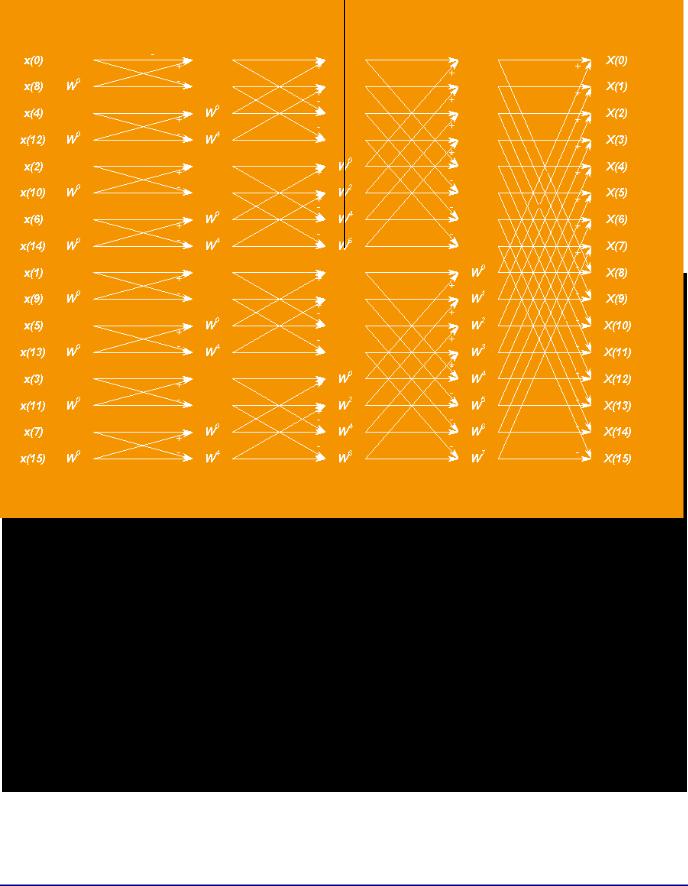1 and 2 are combined together with the required bit reversing into a single optimized loop (since these two stages require no multiplies, only adds and subtracts). Each of the remaining stages is usually done by combining the butterflies that share the same twiddle factors together into groups (so the twiddles have to be fetched only once for each group). Un-optimized assembly source code for a TigerSHARC processor implementing this algorithm is shown in Listing 1. This, with a few tricks that are irrelevant to this discussion, is the way that the 32-bit floating-point FFT code was written when it was
a
targeted to an ADSP-TS101 processor. The benchmarks (in core clock cycles) for this algorithm, including bit reversal, running on an ADSP-TS101 and ADSP-TS201, are shown in Table 1. Note that since the ADSP-TS101 has less memory per memory block than a ADSPTS201, larger point size benchmarks do not apply to the ADSP-TS101. Clearly, as long as the data fits into the ADSP-TS201 cache, it is efficient. Once the data becomes too large for the cache, this FFT implementation becomes extremely inefficient – the cycle count increases from optimal by a factor of five.


